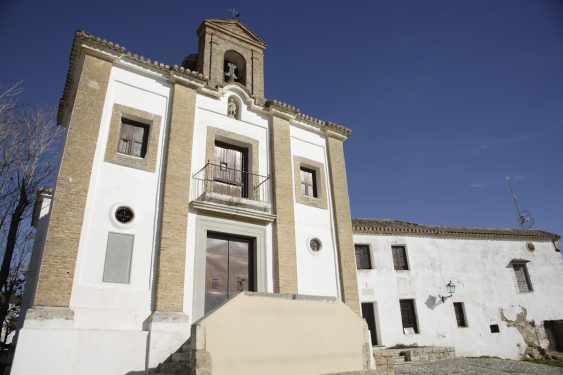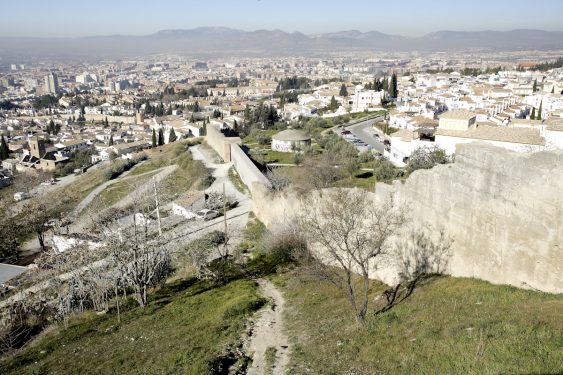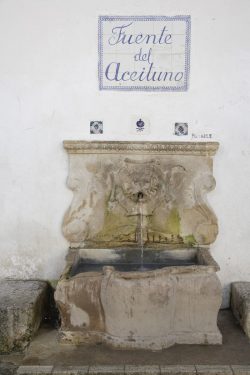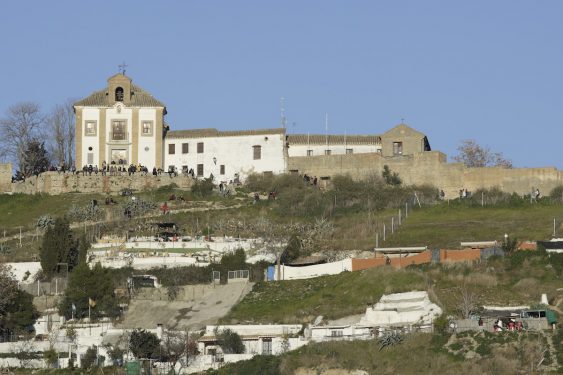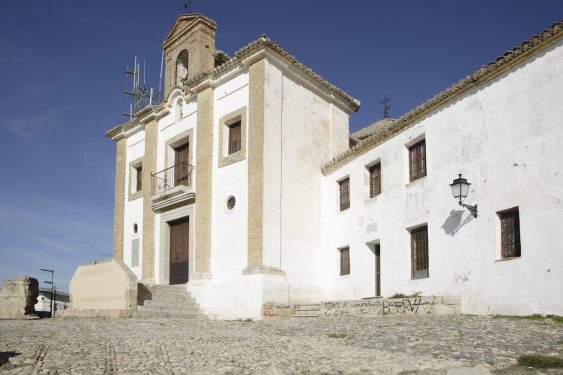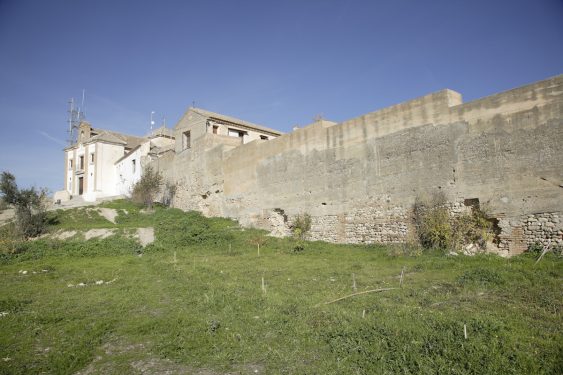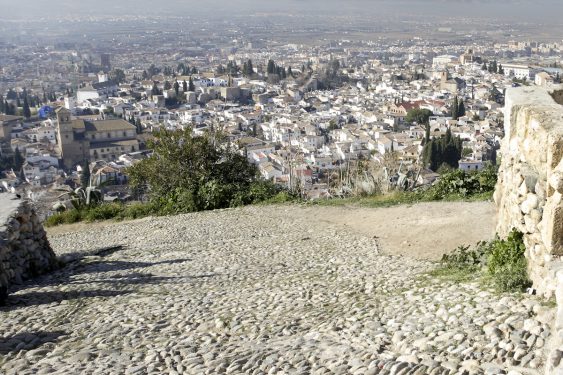Chapel built in 1673 that preserves, among other works, the sculpture of St. Michael the Archangel that inspired Lorca one of the most famous poems of the Gypsy Ballads.
The Hermitage of the Archangel St. Michael (Ermita del Arcángel San Miguel), like so many Christian buildings, was raised in 1673 by Archbishop Diego Escolano on an ancient Arab tower called Del Aceituno that closed the Nasrid wall of Granada. Next to it there was a fountain and a “prodigious” and tireless olive tree, celebrated by the Arab authors, which bore fruit and ripened every day.
The original church was enlarged in 1753 but was destroyed during the French occupation in 1812. It was then rebuilt by the Archbishopric in different phases, the last in 1883.
The archangel is taken out on the Sunday following September 29 in a very popular picturesque pilgrimage. This tradition is still in force, despite the fact that temporarily the Archbishopric decided at the time to suspend the parade because of comments about the widespread sexual ambivalence of the image that Lorca describes in detail in the ‘Gypsy Ballads’
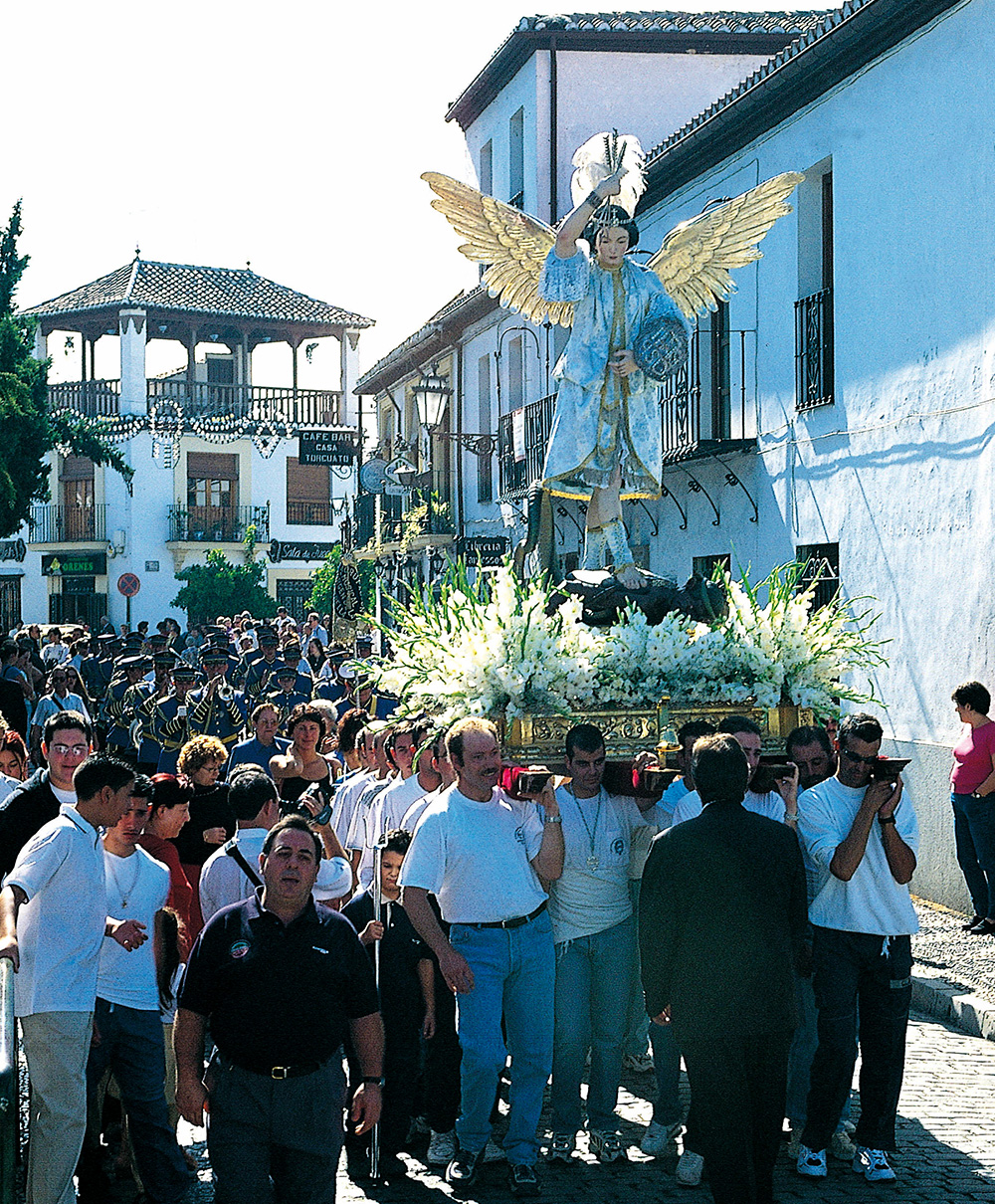
From its location, on the promontory that crowns the Albaycín, there are impressive panoramic views of the city and the villages lying to the south and west. At the back and side of the hermitage begin the ravines that flow into the Sacromonte.
Its connection with Lorca, however, is based on the androgynous statue of the archangel Saint Michael that is kept in its chapel and to which Lorca dedicated one of his best-known poems of the Gypsy Ballads written during the summer of 1926 in Lanjarón and the Huerta de San Vicente (San Vicente Farmhouse). The carving, sculpted by Bernardo Francisco de Mora in 1675, represents a delicate celestial being clad in lace and feathers who steps on a grotesque devil and also threatens him with a soft gesture with a kind of golden lancet.
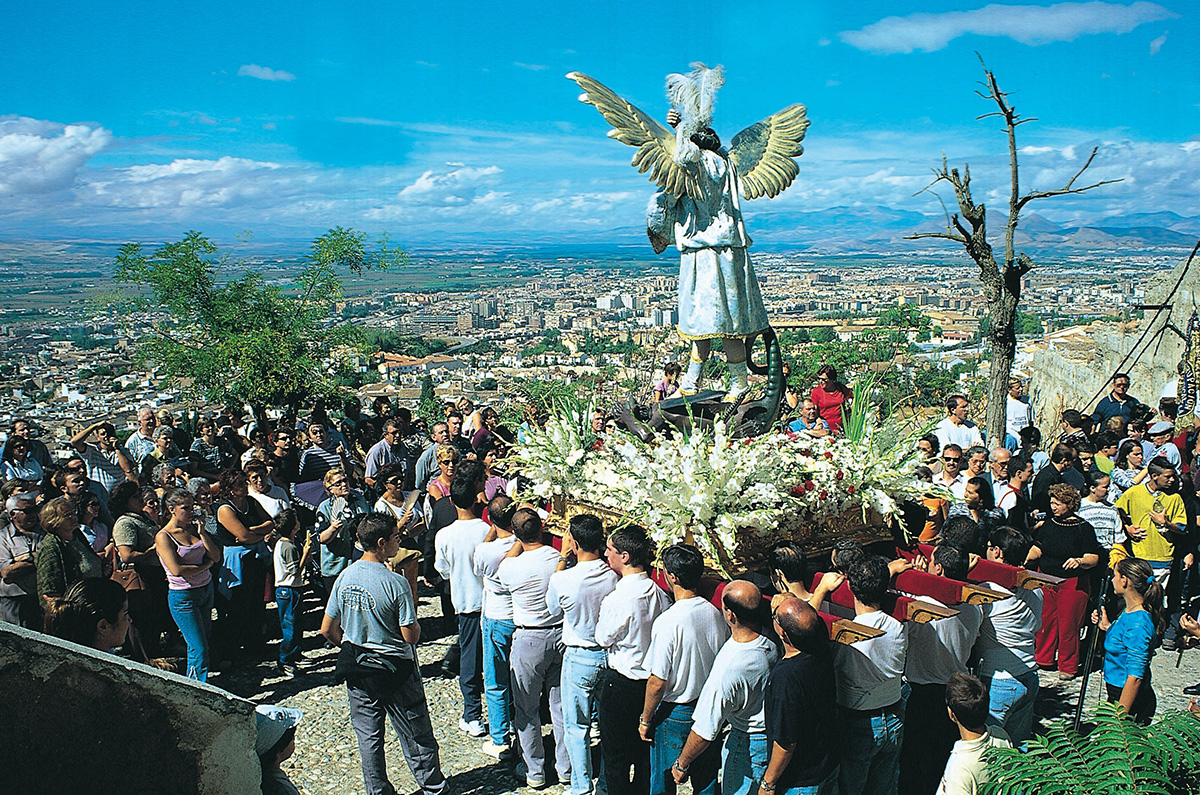
The archangel is always taken out on the Sunday after September 29th in a very popular picturesque pilgrimage, in which colorful balloons are thrown into the sky and autumn fruits are consumed, through the hill of Aceituno and the Albaycín. In a way, it is the antithesis of the procession of the Virgen de las Angustias, patron saint of the city, which parades on the last Sunday of September. At the time, the Archbishopric decided to suspend the parade because of comments about the widespread sexual ambivalence of the image that Lorca describes in detail in his poem. However, the tradition has been recovered and the pilgrimage continues to be held.
The ballad was written in the summer of 1926 in the Huerta de San Vicente, after a family stay of a few days in Lanjarón, along with another entitled Waiters’ Quarrel. Lorca sent both poems to Jorge Guillén on September 9 as part of a long letter. Previously, in August, in a postcard, he had announced to him: “Here I have written two new ballads that required an extraordinary effort on my part”.
The popularity of the poem turned it into a kind of lyrical celebration of homosexuality. In the same way the pilgrimage concentrated the sympathies of the gay community until the Church suspended it. The zeal to keep the carving under lock and key had reached the point that access to the hermitage was practically impossible, although the place and its wonderful views are still worth not only a visit but long contemplation.
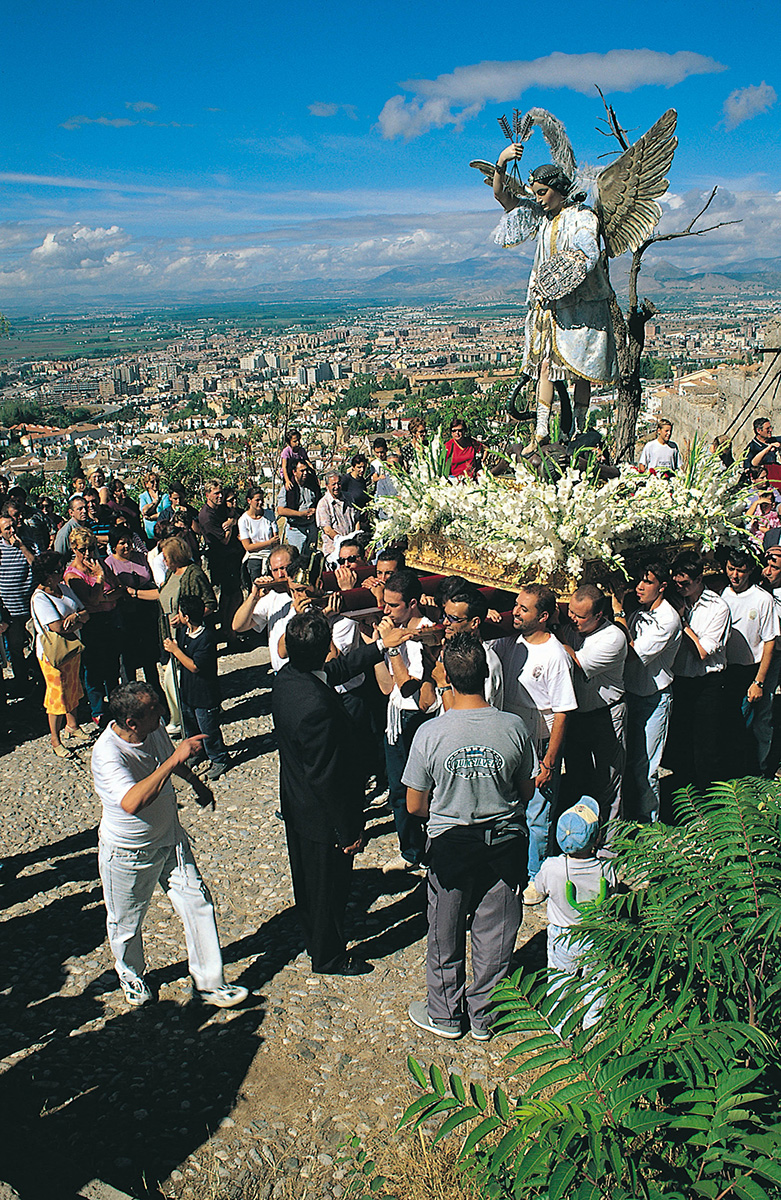
The publication of Ballads in 1928 was not well received by two of his closest companions at the Students’ Residence, Salvador Dalí and Luis Buñuel. The painter described the ballad of The Unfaithful Wife as the worst of all, and the filmmaker scorned that of San Miguel. Nor did it convince his first reader, Jorge Guillén, who called it “impossible”.
San Miguel lleno de encajes
[St. Michael, covered in lace,]
en la alcoba de su torre,
[shows his lovely thighs,]
enseña sus bellos muslos,
[in his tower room,]
ceñidos por los faroles.
[encircled by lanterns.]
Arcángel domesticado
[The Archangel, domesticated,]
en el gesto de las doce,
[in the twelve-o-clock gesture,]
finge una cólera dulce
[pretends to a sweet anger]
de plumas y ruiseñores.
[of plumage and nightingales.]
San Miguel canta en los vidrios;
[St. Michael sings in the glass,]
Efebo de tres mil noches,
[effeminate one, of three thousand nights,]
fragante de agua colonia
[fragrant with eau de cologne,]
y lejano de las flores.
[and far from the flowers.]
(…)
San Miguel se estaba quieto
[St. Michael is motionless]
en la alcoba de su torre,
[in the bedroom of his tower,]
con las enaguas cuajadas
[his petticoats encrusted]
de espejitos y entredoses.
[with spangles and brocades.]
San Miguel, rey de los globos
[St. Michael, king of globes,]
y de los números nones,
[and odd numbers,]
en el primor berberisco
[in the Berberesque delicacy]
de gritos y miradores.
[of cries and windowed balconies].
- Ian Gibson. Lorca and the Gay World. Planeta, 2009.
- Antonio Gallego Burín. Granada, Artistic and Historical Guide. Comares. Granada, 1987.
- Federico García Lorca. Gypsy Ballads. Complete works I. RBA-Instituto Cervantes, Barcelona, 2006.
- Jesús Ortega. Album. Huerta de San Vicente. Granada, 2015.
- Lorca´s location
- Hermitage of the Archangel Saint Michael
- current location
- Hermitage of the Archangel Saint Michael
- ADDRESS
- Carril de San Miguel
- DETAILS OF THE VISIT
The Hermitage of the Archangel St. Michael is closed all year round. It only opens on the Sunday after September 29, for the celebration of the pilgrimage in which the image of the Archangel is taken in procession through the Albaycín district. The celebration is usually very crowded and includes food tasting.
However, although the church remains closed, a visit to the viewpoint of San Miguel Alto is worthwhile for the excellent views it offers of the city of Granada.
